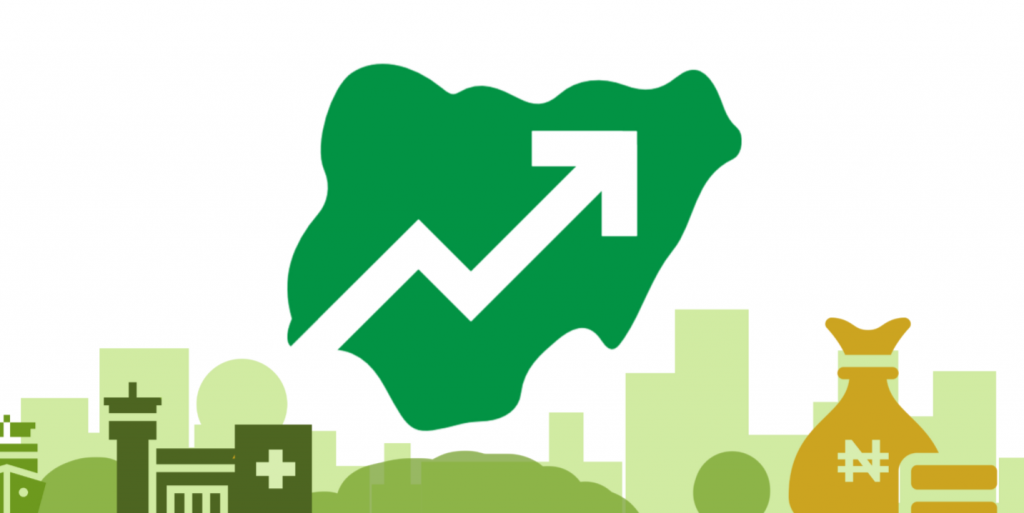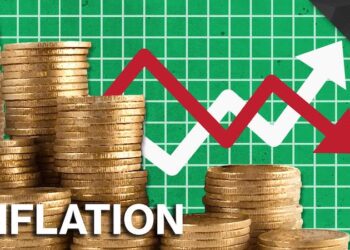The National Bureau of Statistics (NBS) says the nation’s Gross Domestic Product (GDP) grew by 3.40 per cent in 2021.
Mr Simon Harry, the Statistician-General of the Federation, said this in Abuja at a media briefing on the nation’s GDP for 2021 and the fourth quarter of 2020.
He said that the annual nominal value in 2021 was N173.53 trillion as against N152.32 trillion in 2020, showing a growth rate of 13.92 per cent, while annual real value of 2021 stood at N72.39 trillion compared to N70.01 trillion in 2020.
Harry also told newsmen that the GDP grew by 3.98 per cent in the fourth quarter of 2021 from 4.03 per cent recorded in the third quarter.
“This figure to an average Nigerian may be seen lower than the 4.03 per cent growth rate recorded in quarter three, 2021.
“However, analytically, it is not when viewed in terms of the base effect of the corresponding period in quarter four of 2020.
“Then the economy recorded a GDP growth rate of 0.11 per cent as against the growth rate recorded in quarter three of the same year which was -3.62 per cent.”
He said that the GDP growth rate for quarter four of 2020 was 0.11 per cent,
quarter one 2021 0.51 per cent, quarter two 5.01 per cent and quarter three 4.03 per cent.
According to him, the improvement being seen in the output growth in the last five quarters depicts a steady progress made in stemming the COVID-19 pandemic and the associated negative impact on livelihood, well-being and the economy.
Harry added that economic recovery was a gradual process that required consistent collective efforts to improve economic activities across the institutional sectors.
He said that in nominal terms, aggregate GDP stood at N49.28trillion in fourth quarter of 2021, higher when compared with fourth quarter 2020 which recorded N43.56 trillion, indicating a year-on-year nominal growth rate of 13.11 per cent.
“In terms of real GDP which shows volume of economic activities, fourth quarter 2021 recorded N20.33 trillion, higher by N778.91 billion than N19.55 trillion recorded in fourth quarter 2020.
“This shows output growth of 3.98 per cent in fourth quarter of 2021.”
Harry said that on an annual basis, the oil sector contributed 7.24 per cent to the GDP compared to 8.16 per cent in 2020.
Meanwhile, for the fourth quarter, oil contributed 5.19 per cent to GDP from 5.87 per cent it contributed in fourth quarter 2020.
According to him, an average daily oil production of 1.50 million barrels per day (mbpd) was recorded in fourth quarter of 2021, showing a lower volume compared to 1.56 mbpd recorded in quarter four of 2020 by 0.06mbpd.
He added that the fourth quarter 2021 daily oil production also showed lower volume compared with the third quarter 2021 production volume of 1.57mbpd.
For the non-oil sector (which excludes Crude Petroleum and Natural Gas activity), Harry said that annual contribution increased from 91.84 per cent in 2020 to 92.76 per cent in 2021.
He added that annual growth rate for the sector was 4.44 per cent as against -1.25 per cent in 2020.
It however recorded growth of 4.73 per cent in fourth quarter 2021 in real terms, an improvement from 1.69 per cent reported in fourth quarter, 2020.
However, growth rate of non-oil sector in third quarter 2021 performed better at 5.44 per cent.
The statistician-general said that the fastest growing activities in fourth quarter of 2021 were Transportation and Storage; Mining and Quarrying; Financial and Insurance, Water Supply, Sewerage, Waste Management and Remediation Sectors.
“Thus, the fastest growing activities in real terms during the fourth quarter 2021 GDP estimates were Air Transport (63.05 per cent), Coal Mining (62.91 per cent), Metal Ores (46.96 per cent), Quarrying and Other Minerals (42.92 per cent), Rail Transport and Pipeline (37.74 per cent) and Road Transport (30.39 per cent).
“Others are Water Supply, Sewerage, Waste Management and Remediation (28.84 per cent) and Financial Institutions (25.19 per cent).
“On the other hand, the slowest growing activities include Oil Refining (-43.94 per cent), Crude Petroleum and Natural Gas (-8.06 per cent), Wood and Wood Products (-4.82 per cent), Pulp, Paper and Paper Products (-3.33 per cent) and Textile, Apparel and Footwear (-2.37 per cent).”
Harry said that air, rail and road transportation witnessed high demand in fourth quarter 2021 due to the festive season and easing of travel restrictions, while growth of financial institutions was driven principally by the volume of deposits and interest on deposit received.
He, however, said that the poor performance of oil was due to operational challenges and insecurity caused by pipeline vandals.
On the broad sectoral performance, he said that agriculture grew by 3.58 per cent during the fourth quarter of 2021 in real terms higher than fourth quarter 2020 which recorded 3.42 percent.
He also said that industry grew by -0.05 per cent, an improvement over fourth quarter 2020 growth of -7.30 per cent, while services accounted for 5.58 per cent growth, also an improvement from 1.31 per cent in fourth quarter 2020.
According to Harry, on annual basis, the growth of industry and services improved from -5.85 per cent and -2.22 per cent in 2020 to -0.47 per cent and 5.61 per cent respectively in 2021.
However, the growth of the agriculture sector declined slightly from 2.17 per cent in 2020 to 2.13 per cent in 2021.
He said that agriculture contributed 26.84 per cent, industry 18.05 per cent and services 55.11 per cent to GDP in fourth quarter 2021.
In contrast, agriculture contributed 26.95 per cent, industry 18.77 per cent and services 54.28 per cent in fourth quarter 2020.
This, he said, showed higher contribution of services in fourth quarter 2021 compared to fourth quarter 2020 as well as on annual basis in 2021.
GDP helps to determine the structure and dynamics of an economy, which by implication measures the performance of the economy within a given period of time.











